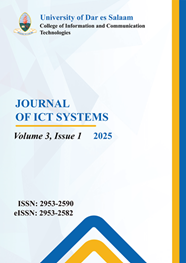Geospatial Analysis of Water Sources Accessibility: A Case Study from Tanzania
Main Article Content
Abstract
The government of Tanzania uses Water Points Mapping (WPM), a practice that utilizes GIS technologies, as the main tool for monitoring rural water supply. Data from WPM is used to report the functionality status of the water points, a proxy indicator (a measurable substitute) for water access. Access to water sources is crucial for strategically constructing water points to improve access to clean and safe water. This study employed cost-distance geospatial analysis methodology to establish routes to water sources from nearby villages where the construction of water points could take place. The research took place in the Kilimanjaro region in Tanzania where the researchers conducted interview sessions with household members and district water engineers. Data were also collected by reviewing water point records. The study found that inaccessible water sources exacerbated the scarcity of water as they limit the possibilities of constructing more water points. The study demonstrated a better approach to establishing routes to water sources from water point construction areas through the use of cost distance geospatial analysis. The study recommends the use of geospatial analysis to establish access routes to water sources as it increases the possibilities of enabling water sources to serve multiple water points.
Article Details

This work is licensed under a Creative Commons Attribution-NonCommercial-NoDerivatives 4.0 International License.

